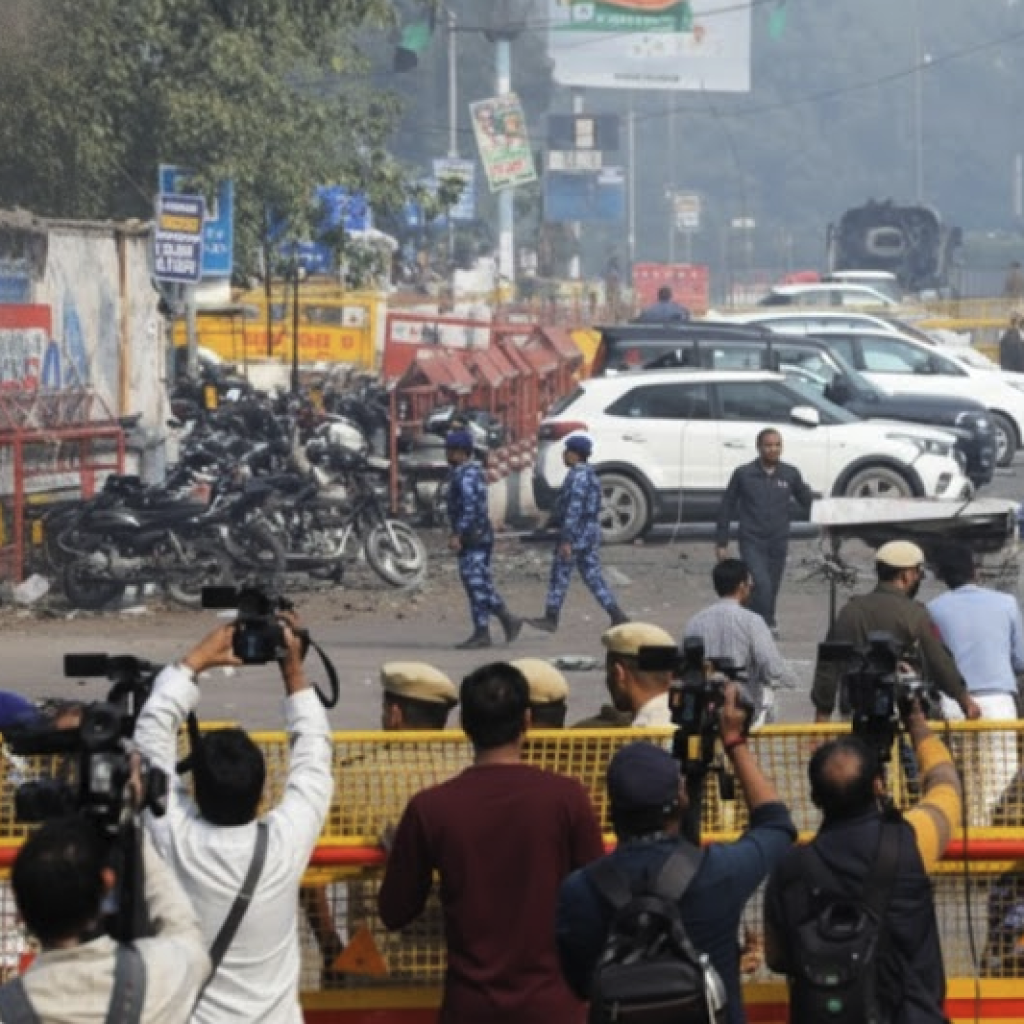The heart of India's capital was shaken on November 10, 2025, when a powerful car explosion near the historic Red Fort claimed 13 lives and left a nation grappling with questions. As someone who has witnessed Delhi's resilience through decades of challenges, I can tell you this attack strikes at the symbolic center of our national identity. What began as a tragic incident has rapidly evolved into one of the most significant counter-terrorism investigations in recent years, revealing a sophisticated network that security agencies are now systematically dismantling.
The Attack: Timeline and Immediate Aftermath
The explosion occurred around 6:30 PM near Gate No. 1 of the Red Fort, a UNESCO World Heritage site that symbolizes India's sovereignty. A white Hyundai i20 sedan packed with ammonium nitrate fuel oil detonated with such force that it damaged multiple vehicles in the vicinity and injured pedestrians near the Lal Quila Metro Station. The immediate response saw Delhi Police, fire services, and medical teams rushing to the scene amid chaos and confusion.
Casualty and Response Details
The human cost of this attack became starkly clear through the night. The death toll currently stands at 13, with several victims critically injured and undergoing treatment at Lok Nayak Hospital. Delhi Chief Minister Rekha Gupta announced ex-gratia payments for the victims' families, while Prime Minister Narendra Modi, who was in Bhutan during the incident, immediately contacted Home Minister Amit Shah to coordinate the response.
\"Having led teams through crises for 25 years, I've learned that true leadership emerges in these moments. PM Modi's immediate directive that 'all those responsible will be brought to justice' sets the tone for what must be an uncompromising response.\"
Investigation Breakthroughs: The Terror Module Uncovered
Within hours, the investigation revealed this was no ordinary crime. The Centre formally described the explosion as a \"terrorist incident,\" and the case was handed over to the National Investigation Agency (NIA). What emerged was the unraveling of a sophisticated \"white-collar terror module\" with alarming dimensions.
The Jaish-e-Mohammed Connection
Investigators have established links to Pakistan-based terror group Jaish-e-Mohammed, the same organization responsible for the 2019 Pulwama attack. The modus operandi - using ammonium nitrate in a vehicle-borne IED - mirrors previous Jaish tactics. The NIA has constituted a dedicated investigation team specifically for this case, recognizing its significance in the broader counter-terrorism landscape.
The Doctor-Terrorist Network
In a disturbing development, the investigation has exposed a network involving educated professionals. Among the 18+ individuals arrested so far are six doctors and two religious scholars. The prime suspect, Dr. Umar Un Nabi (who owned the explosive-laden car), allegedly panicked and triggered the blast after security forces arrested two key members of his module - Dr. Mujammil Shakeel and Dr. Adil Rather - in Faridabad.
Latest Arrests and Nationwide Raids
The investigation has triggered coordinated operations across multiple states. The Uttar Pradesh Anti-Terrorism Squad detained Dr. Mohammad Arif, a cardiology student from Jammu and Kashmir, in Kanpur. Nine suspects were taken into custody from Kanpur in connection with the blast, indicating the widespread nature of this network.
Forensic and Technical Evidence
Forensic experts have confirmed the use of ammonium nitrate, which was found in Faridabad. Technical analysis of over 100 CCTV clips shows the suspect's vehicle entering and exiting the Red Fort area multiple times, including footage of the Hyundai i20 parked near a Faridabad petrol pump days before the blast. The National Security Guard (NSG) and Forensic Science Laboratory (FSL) teams have been conducting thorough analysis at the blast site.
Government Response and Security Measures
The Indian government has responded with both immediate security measures and long-term strategic planning. Home Minister Amit Shah held a high-level security review meeting hours after the blast and ordered matching of samples from the bodies in the i20 car with other evidence.
Enhanced Security Protocols
All district police units and specialized wings have been directed to remain on high alert with increased patrolling in crowded areas, especially near tourist spots, malls, and religious places. The Lal Quila Metro Station remained closed the day after the blast as investigations continued. The government has firmly denied early speculation about a \"CNG explosion,\" maintaining from the beginning that this was a terrorist act.
\"In business and in national security, denial is the most expensive luxury. The government's swift categorization of this as a terrorist incident demonstrates the maturity of our security apparatus - they're calling the threat what it is rather than minimizing it.\"
International Reaction and Diplomatic Implications
The attack has drawn international attention, with several countries issuing travel advisories for their citizens in Delhi. The United States Embassy issued a security alert advising American citizens to avoid the area. The involvement of Jaish-e-Mohammed, a UN-proscribed terrorist organization, adds significant diplomatic dimensions to the investigation, particularly given the group's cross-border operations.
Key Takeaways: What We've Learned
- The attack represents a shift toward educated, professional terrorists rather than traditional operatives
- Ammonium nitrate remains the explosive of choice for terrorist groups due to its accessibility
- India's multi-agency response demonstrates significant improvement in counter-terror coordination
- The Jaish-e-Mohammed connection indicates persistent cross-border terror threats
- CCTV and technical surveillance have become crucial in modern terrorism investigations
- The government's immediate transparency about the terrorist nature sets important precedents
- International cooperation will be essential in addressing the transnational dimensions
Moving Forward: Security and Resilience
As the investigation continues to unfold, several critical questions remain. How extensive is this doctor-terror module? What other targets might have been planned? And most importantly, how can India strengthen its preventive capabilities against such sophisticated threats?
The Red Fort blast serves as a stark reminder that terrorism continues to evolve, adopting new methodologies and recruiting from unexpected segments of society. Yet, India's response - systematic, transparent, and determined - demonstrates our nation's growing capability to confront these challenges head-on. The coming days will likely reveal more about this network as the NIA continues its methodical investigation, but one thing is already clear: the architects of this violence will find no sanctuary in our determined pursuit of justice.
\"Twenty-five years in technology has taught me that systems are only as strong as their ability to adapt. Our security establishment is demonstrating exactly that - adapting to new threats, new methodologies, and new networks. This is how resilient nations are built.\"









